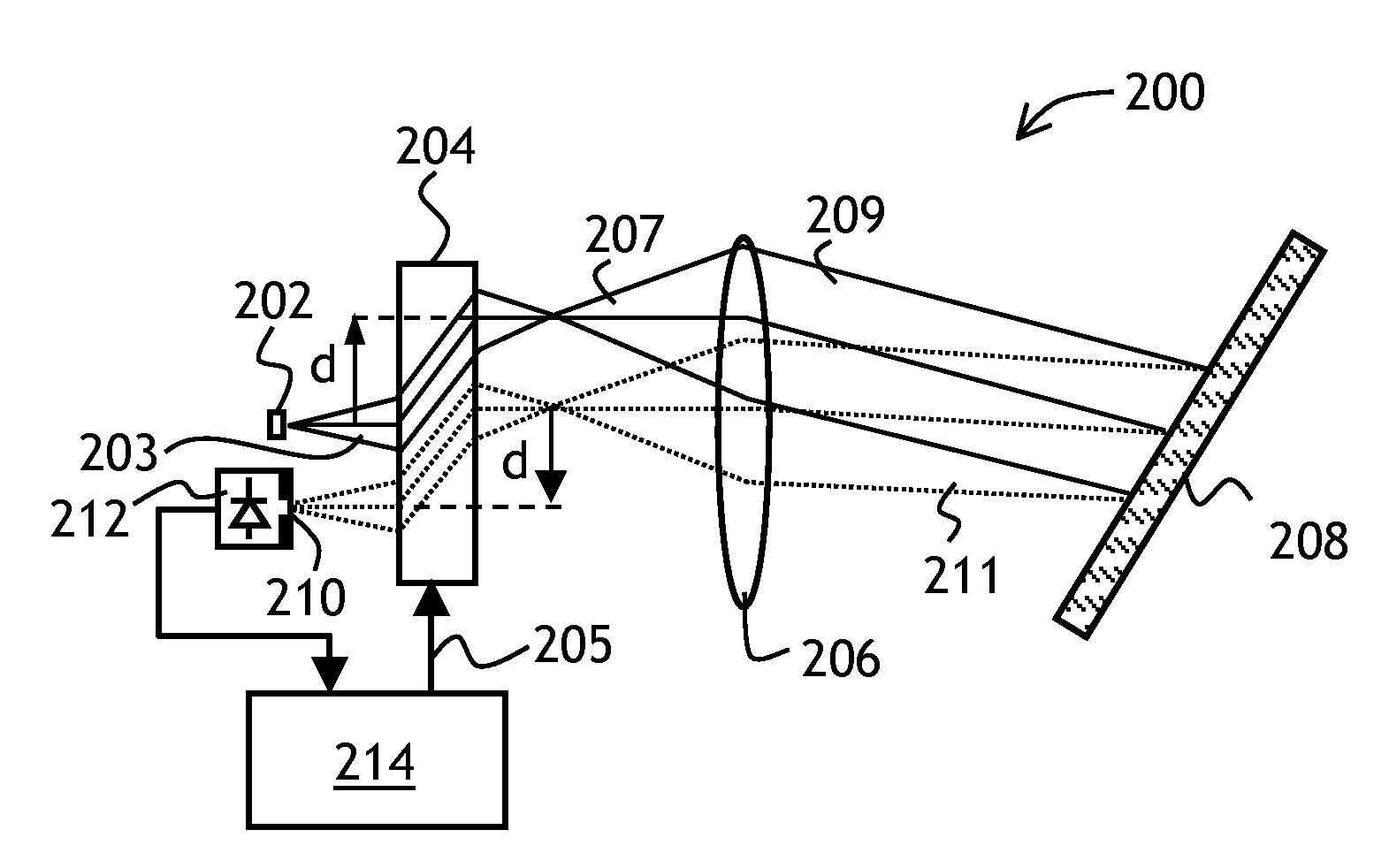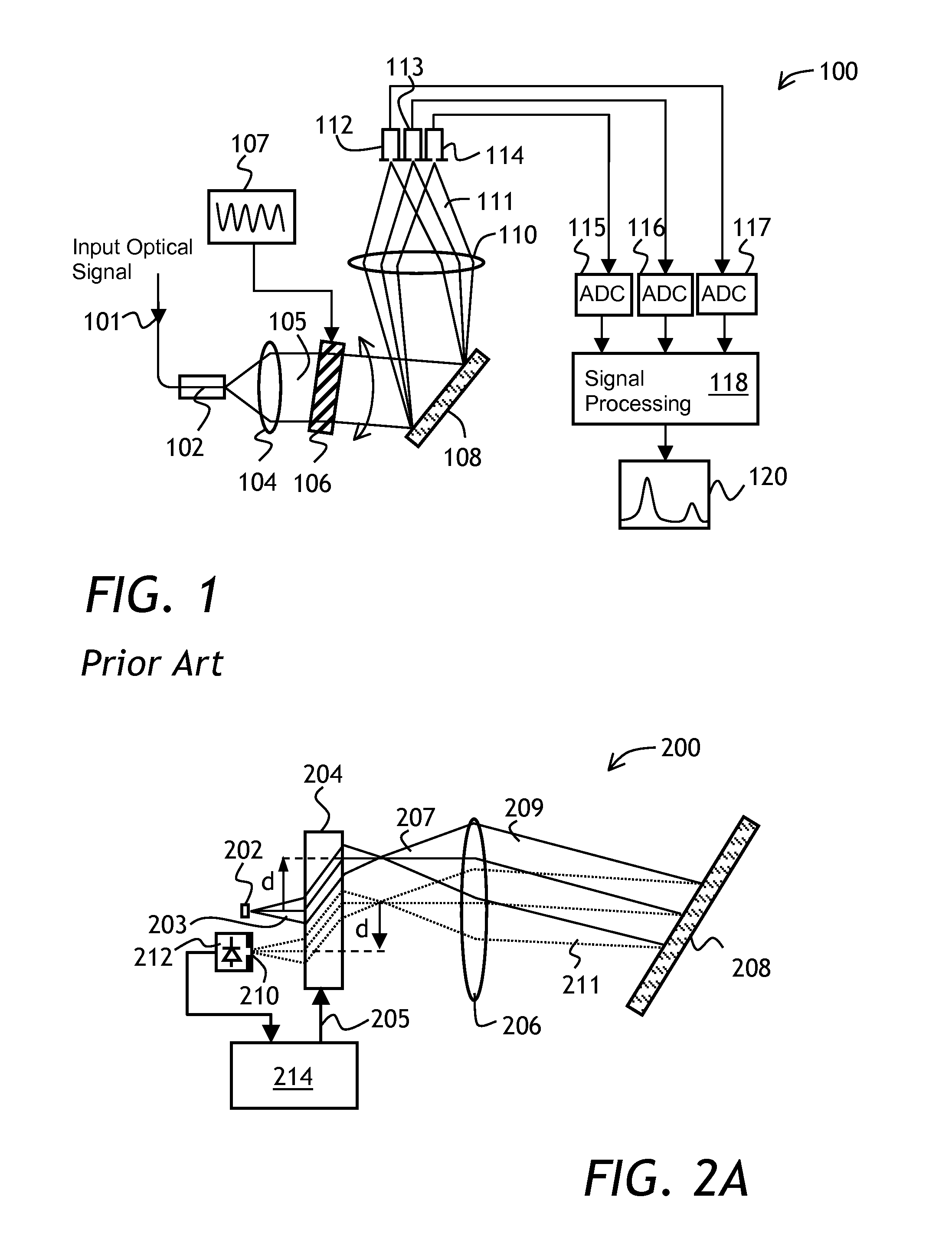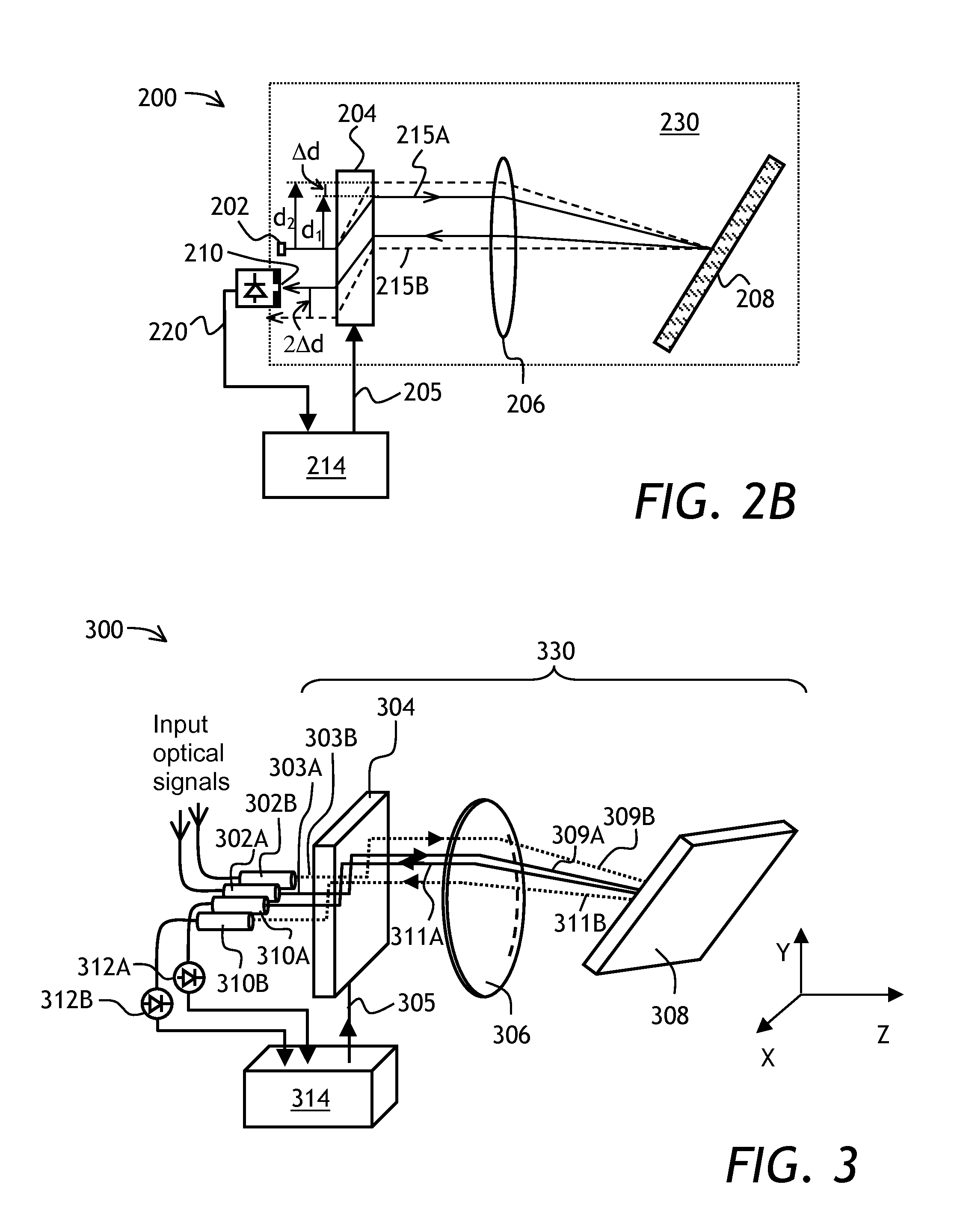Tunable optical filter and spectrometer
a spectrometer and optical filter technology, applied in the field of optical filters, can solve the problems of poor response time, large volume and cost of traditional spectrometers, and limited response time of network control loops, and achieve high fidelity of measured spectra, fast speed, and high precision
- Summary
- Abstract
- Description
- Claims
- Application Information
AI Technical Summary
Benefits of technology
Problems solved by technology
Method used
Image
Examples
Embodiment Construction
[0041]While the present teachings are described in conjunction with various embodiments and examples, it is not intended that the present teachings be limited to such embodiments. On the contrary, the present teachings encompass various alternatives, modifications and equivalents, as will be appreciated by those of skill in the art. In FIGS. 2A, 2B, FIG. 3, FIGS. 4A, 4B, FIG. 5, and FIG. 6A, similar reference numerals denote similar elements.
[0042]Referring to FIG. 2A, a spectrometer 200 of the invention includes an input port 202 for providing an input optical beam 203, a beam translator 204 for translating the input optical beam 203 in a plane of FIG. 2A by a controllable distance d, a lens 206 for collimating a translated optical beam 207, a reflective diffraction grating 208 coupled to the lens 206, for angularly dispersing a collimated beam 209 in the plane of FIG. 2A and reflecting a wavelength-dispersed optical beam 211 back towards the lens 206, an output port 210, a photode...
PUM
 Login to View More
Login to View More Abstract
Description
Claims
Application Information
 Login to View More
Login to View More - R&D
- Intellectual Property
- Life Sciences
- Materials
- Tech Scout
- Unparalleled Data Quality
- Higher Quality Content
- 60% Fewer Hallucinations
Browse by: Latest US Patents, China's latest patents, Technical Efficacy Thesaurus, Application Domain, Technology Topic, Popular Technical Reports.
© 2025 PatSnap. All rights reserved.Legal|Privacy policy|Modern Slavery Act Transparency Statement|Sitemap|About US| Contact US: help@patsnap.com



